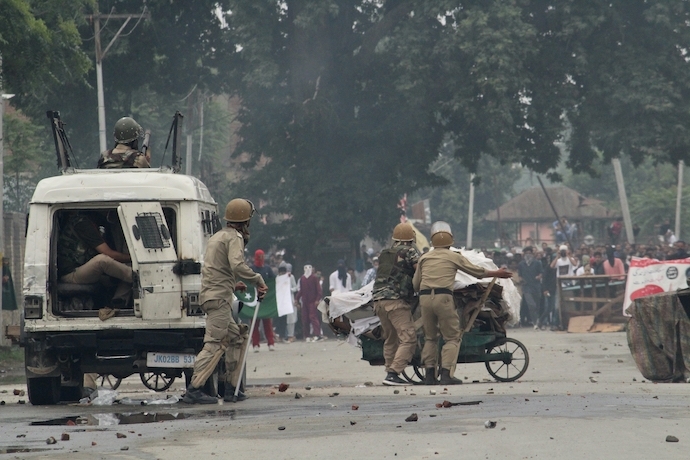The Platform
Latest Articles
by Mohammad Ibrahim Fheili
by Abidemi Alade
by Sheiknor Qassim
by Theo Casablanca
by Vince Hooper
by Samita Sajeevan
by James Carlini
by Sheiknor Qassim
by Samudrala VK
by Mohammad Ibrahim Fheili
by Abidemi Alade
by Sheiknor Qassim
by Theo Casablanca
by Vince Hooper
by Samita Sajeevan
by James Carlini
by Sheiknor Qassim
by Samudrala VK
Kashmir Militancy: A New Chapter
01.09.2022
Among the many remnants of South Asia’s colonial legacy, the unresolved Kashmir conflict remains one of the biggest flashpoints. The armed struggle for independence of Jammu and Kashmir has since seen numerous instances of unrest. The recent spate of violent incidents in the Kashmir Valley marks a new chapter in the tragedy that is Kashmir. 34 civilians have lost their lives in recent months which have seen a series of militant attacks on civilians. Additionally, at least 9 members of the Indian security forces have also been killed in an ongoing skirmish in the border district of Poonch.
These violent incidents caused nationwide outrage in India with the media demanding strict action against the groups carrying out these attacks. Additionally, the morality of the local people was also questioned as Indians demanded Kashmiris stand against these attacks. Interestingly, in the media’s coverage surrounding these incidents, the religion of the victims was an integral part of the headlines. The clamouring was rather reserved for the deaths of non-local labourers and local religious minorities together comprising 10 of the 34 civilian victims.
For anyone who is even remotely aware of the political scenario of Kashmir will know India’s outrage against these attacks is not only grossly misplaced but also cruelly ironic. This change in the nature of violence that the Kashmiri militants have adopted has not come overnight. It emerged after a long silence, marked by the breaking down of all the means and approaches that a more humane government could have used to deal with the Kashmir issue politically.

Seeing this new trend of violence, the few self-proclaimed allies of Kashmiris in India washed their hands of any kind of support and called for the people of Jammu and Kashmir to condemn these seemingly senseless acts of violence.
These new incidents have been claimed by groups that were until now unheard of. One of these groups, which call itself The Resistance Front, said it was not targeting people on the basis of their religion but only those working for Indian authorities. Reuters, the news agency that published the statement, said that they could not immediately verify the authenticity of the statement.
India has for many decades played a carrot and stick game in Kashmir. On August 5, 2019, the carrot disappeared. Sticks were all that were left. Sticks, with guns and smoke, served with barbed wire on the side. From a six-month-long communication gag to the return of 1990s style military crackdowns, the post-370 era in Kashmir was exactly what most of its people imagined it to be: brutal, chaotic, and uncertain. All this, however, was expected for the people in the state and acceptable to the people outside it. Immediately after the de-operationalization of Article 370 of the Indian constitution which granted a special status to Jammu and Kashmir, many political commentators like Victoria Schofield had warned of greater disaffection and increased alienation.
News outlets usually write the first drafts of history. If that is the case, let it be written that the accountability for the current spate of violence lies with the people of India as they silently watched the demonization of a whole culture, they cheered on the incarceration of a nation and treated humans like mindless and soulless cattle. We must not allow the othering of the native Kashmiris. You can’t dehumanise a people and then demand humanity from them.
Bilal Ahmad Tantray is a PhD scholar from Kashmir presently based in New Delhi.